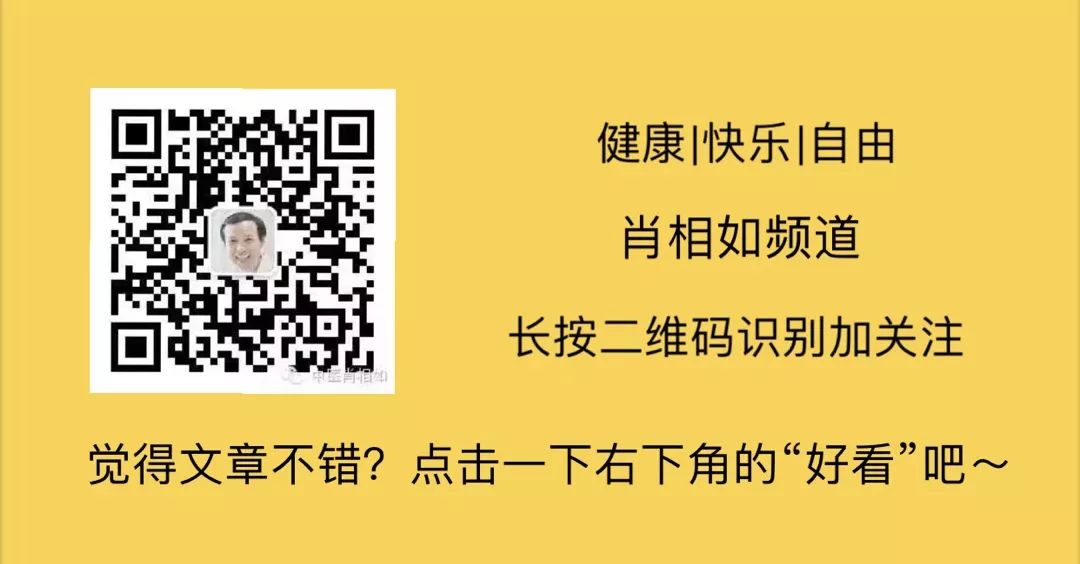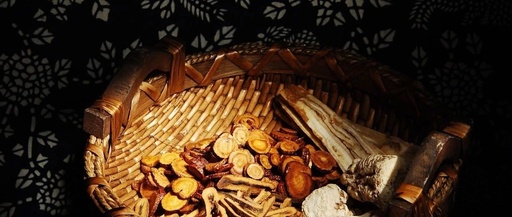Xiao Xiangru notes: Today we will study Ma Huang Fu Zi Xi Xin Tang, Qiang Huo Sheng Shi Tang, and Yin Qiao San (Sang Ju Yin).
“Practical Notes on the Diagnosis and Treatment System for External Pathogenic Diseases” | Common Formulas for Treating Colds Series (Part One)
“Practical Notes on the Diagnosis and Treatment System for External Pathogenic Diseases” | Common Formulas for Treating Colds Series (Part Two)
“Practical Notes on the Diagnosis and Treatment System for External Pathogenic Diseases” | Common Formulas for Treating Colds Series (Part Three)
1
Ma Huang Xi Xin Fu Zi Tang
According to the “Shang Han Lun” (Treatise on Cold Damage), Section 301: In Shaoyin disease, if one experiences a sudden fever with a deep pulse, Ma Huang Xi Xin Fu Zi Tang is indicated.
This formula is used in the “Shang Han Lun” for the Shaoyin syndrome with both exterior and interior symptoms.
It is now commonly used for Yang deficiency with cold evil, characterized by fever, aversion to cold, and a deep pulse as key diagnostic points.
Case 21
Zhao, female, 78 years old. Initial diagnosis: July 2014.
The patient was hospitalized for coronary heart disease and heart failure. After treatment, her heart failure improved, but she caught a cold just before discharge, which did not improve with treatment.
During the consultation, she presented with aversion to cold, no fever, fatigue, reduced speech, drowsiness, mental confusion, irrelevant answers, lower limb swelling, a dark tongue with a white slippery coating, and a fine deep pulse, indicating Yang deficiency with water retention and cold evil.
Prescribed Ma Huang Xi Xin Fu Zi Tang combined with Zhen Wu Tang:Ma Huang6 grams Xi Xin6 grams Fu Zi10 grams Fu Ling15 grams Bai Zhu10 grams Bai Shao10 grams Sheng Jiang15 grams Ren Shen10 grams
3 doses
After taking the medicine, her aversion to cold improved, and her spirit was better, allowing her to be discharged. However, half a month later, she was readmitted due to heart failure, and treatment was ineffective, leading to her death.
Discussion:
The patient was an elderly woman with a history of multiple hospitalizations for heart failure. She had a constitution of Yang deficiency, which was further affected by cold evil, along with water retention. Zhen Wu Tang was used to warm Yang and promote water metabolism;
Ma Huang Xi Xin Fu Zi Tang warms Yang and releases the exterior, combined with Ren Shen to greatly tonify the original Qi, warming and supplementing the Yang, treating both exterior and interior, warming the kidneys, releasing the exterior, and promoting water metabolism, thus achieving temporary efficacy.
2
Qiang Huo Sheng Shi Tang
This formula is from Li Dongyuan’s “Nei Wai Shang Bian Huo Lun”: “Shoulder and back pain that cannot be turned back indicates stagnation of Taiyang Qi, which can be dispersed with wind herbs. If there is back pain and stiffness in the neck, and the waist feels broken, this indicates obstruction in the Taiyang meridian, and Qiang Huo Sheng Shi Tang is indicated.”
The original formula treats shoulder, back, and spinal pain caused by Taiyang meridian disease.
It is now commonly used for headaches, heaviness in the head, body aches, difficulty turning, aversion to cold with slight fever, white coating, and a soft pulse due to cold dampness on the exterior.
Case 22
Zhang, female, 34 years old. Initial diagnosis: January 16, 2018.
She had aversion to cold and body aches for three days, which did not improve with Western medicine.
Upon examination, she presented with aversion to cold, heaviness in the head and body, muscle soreness throughout, a temperature of 37°C, runny nose, sneezing, coughing with a small amount of white phlegm, a pale tongue with a white greasy coating, and a floating fine pulse.
Indicating cold dampness on the exterior.
Prescribed Qiang Huo Sheng Shi Tang with modifications:Qiang Huo10 grams Du Huo10 grams Chuan Xiong10 grams Man Jing Zi15 grams Gao Ben10 grams Fang Feng10 grams Zhi Gan Cao10 grams Jie Geng10 grams Xing Ren10 grams Jing Jie10 grams Qian Hu10 grams Sheng Jiang15 grams
3 doses
Second diagnosis: January 19, 2018
Aversion to cold and body aches improved, but still had nasal congestion, runny nose, slight cough, small amount of white phlegm, and fatigue. The tongue coating became thinner, and the pulse was fine.
Indicating that dampness has been removed but cold remains, and the righteous Qi is insufficient.
Prescribed Ren Shen Su Yin:Ren Shen10 grams Su Ye10 grams Ge Gen10 grams Chen Pi10 grams Ban Xia10 grams Fu Ling10 grams Zhi Ke10 grams Jie Geng10 grams Gan Cao6 grams Sheng Jiang15 grams Da Zao4 pieces
3 doses, cured.
Discussion:
The main symptoms during the first diagnosis were aversion to cold and body heaviness, so Qiang Huo Sheng Shi Tang was selected. Accompanied by runny nose and cough, indicating cold evil on the exterior and lung Qi not being released, thus adding Jing Jie, Fang Feng, Jie Geng, Xing Ren, and Qian Hu to disperse cold, release the exterior, and promote lung function to stop coughing.
During the second diagnosis, aversion to cold and body aches improved, the tongue coating became thinner, but nasal congestion, runny nose, and cough persisted, with overall weakness, indicating that dampness was removed but exterior cold remained, and righteous Qi was insufficient. Ren Shen Su Yin was used to tonify Qi, release the exterior, regulate Qi, and transform phlegm, leading to recovery.
3
Yin Qiao San (Sang Ju Yin)
Yin Qiao San is from Wu Jutong’s “Wen Bing Tiao Bian”, Section 4 of the Upper Jiao: “Taiyin wind warmth, warm heat, warm epidemic, winter warmth, if initially experiencing aversion to wind and cold, Gui Zhi Tang is indicated. However, if there is aversion to heat, not to cold, and thirst, the spicy-cool and balanced Yin Qiao San is indicated.”
According to Section 16 of the Upper Jiao: “In Taiyin warm disease, sweating is not allowed; if sweating occurs without resolution, rashes will appear. If sweating is excessive, there will be confusion and delirium. For rashes, Hua Ban Tang is indicated; for eruptions, Yin Qiao San with Dou Chi, adding Xi Sheng Di, Dan Pi, Da Qing Ye, and increasing Xuan Shen is indicated.”
Yin Qiao San is mainly used for the initial stage of warm disease, characterized by fever and thirst, sweating, and not aversion to cold. It may accompany headache, sore throat, cough, red tip of the tongue, thin white coating, little fluid or thin yellow, and a floating rapid pulse.
Case 23
Kang, female, 13 years old. Initial diagnosis: January 13, 2018.
Fever for one day, temperature: 38.6°C, sore throat, cough, no aversion to cold, dry mouth, red tongue with thin white coating, floating rapid pulse.
Indicating heat evil invading the lungs, suitable for clearing lung heat.
Prescribed Yin Qiao San combined with Sang Ju Yin with modifications:Yin Hua30 grams Lian Qiao15 grams Sang Ye10 grams Ju Hua10 grams Jie Geng10 grams Jing Jie10 grams Dou Chi10 grams Bo He10 grams Xing Ren10 grams Niu Bang Zi10 grams Zhe Bei10 grams Shi Gao30 grams Sheng Gan Cao10 grams
Second diagnosis: After taking two doses, fever subsided, but still coughing with a small amount of white phlegm that was difficult to expectorate, nasal bleeding, sore throat, red tongue with thin white coating, floating rapid pulse.
Prescribed Sang Xing Tang:Sang Ye10 grams Xing Ren10 grams Zhe Bei10 grams Sha Shen15 grams Zhi Zi10 grams Gua Lou15 grams Hua Fen15 grams Chen Pi10 grams Jie Geng10 grams
3 doses, cured.
Discussion:
This case presented typical symptoms of Yin Qiao San, with a significant cough.
Due to the flu season, the heat symptoms were more severe than in a typical cold, with a higher temperature, thus both formulas were combined, emphasizing Yin Hua and adding Shi Gao to strongly clear lung heat and promote lung function to stop coughing.
During the second diagnosis, the fever subsided, but the cough persisted, indicating that the heat evil had not completely resolved, and the fluids were damaging the lungs, thus Sang Xing Tang was selected to clear and moisten the lung heat, and stop the cough.
In the initial stage of warm disease, with significant sore throat and cough, I habitually combine Yin Qiao San and Sang Ju Yin for good results.
Case 24
Liu, female, 4 years old. Initial diagnosis: June 10, 2017.
She started with a fever a week ago, and two days later developed corn-like rashes all over her body. She was treated in the dermatology and pediatrics departments of the city hospital, but the fever did not subside.
Upon examination, she had been feverish for a week, with a temperature of 38.6°C, and was covered in red rashes. Her spirit was poor, she cried incessantly, had no appetite, and was restless at night. The tongue was red with a yellow greasy coating, and the pulse was floating rapid.
Indicating heat stagnation in the lungs, with dampness and accumulation.
Yin Qiao San minus Dou Chi, adding Sheng Di, Dan Pi, Da Qing Ye, and increasing Xuan Shen:Yin Hua10 grams Lian Qiao6 grams Zhu Ye6 grams Bo He6 grams Xing Ren6 grams Niu Bang Zi6 grams Sheng Gan Cao5 grams Lu Gen10 grams Sheng Di10 grams Dan Pi6 grams Da Qing Ye10 grams Xuan Shen10 grams
After 3 doses, the fever subsided, the rash color faded, appetite improved, and she gradually recovered.
Discussion:
Heat stagnation in the lungs leads to inability to vent, which over time forces heat into the blood vessels, causing rashes to appear.
Yin Qiao San clears lung heat, while Sheng Di, Dan Pi, and Da Qing Ye cool the blood and clear heat, combined with Xing Ren and Shi Gao to disperse lung dampness, and Bing Lang and Chao Lai Fu Zi to digest and transform accumulation.
This formula is effective for pediatric exanthematous febrile diseases, especially for recent outbreaks of hand-foot-mouth disease, with confirmed efficacy.
Sang Ju Yin is from “Wen Bing Tiao Bian”, Section 6 of the Upper Jiao: In Taiyin wind warmth, if there is only cough, with little heat and slight thirst, the spicy-cool and light Sang Ju Yin is indicated.
Its heat is not severe, and its symptoms are mild, clinically presenting similarly to Yin Qiao San: For sore throat as the main symptom, use Yin Qiao San; for cough as the main symptom, choose Sang Ju Yin.
It is easy to use in clinical practice and will not be discussed further.
4
Gui Zhi Ma Huang Ge Ban Tang
To be continued…
Copyright Statement: This article is original and first published on the WeChat public account: Xiao Xiangru Channel (ID: xiaoxiangru0011). Respect knowledge and labor; no authorization is needed for reprinting, but please be sure to indicate the original author.
Note: Cover image sourced from Shetu Network.
//////////
Recommended Reads, click to read the original text:
Xiao Xiangru: The current understanding of “external pathogenic disease causes” in traditional Chinese medicine is fundamentally incorrect!
“One principle” to resolve misdiagnosis and mistreatment of external pathogenic diseases | Shang Han
Xiao Xiangru teaches you to use Ma Huang Tang | Shang Han



